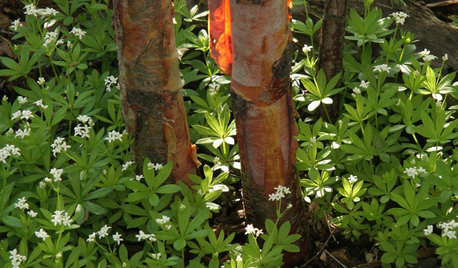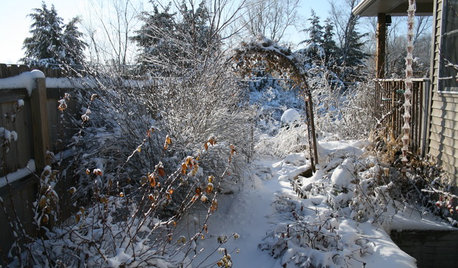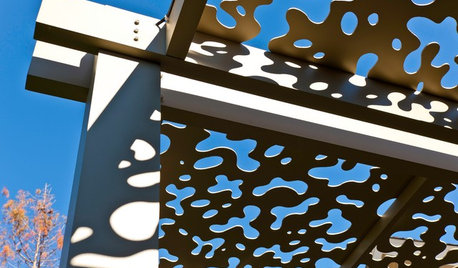Wax Myrtle in zone 6 (non dwarf) in shade?
poaky1
10 years ago
Related Stories

GARDENING GUIDES6 Plants That Beat Butterfly Bush for the Wildlife Draw
It's invasive, a nonnative and a poor insect magnet. Check out these better alternatives to butterfly bush in the garden
Full Story
GARDENING GUIDES6 New Plant Varieties That Beat Out Their Parents
With better resistance and fewer demands, these garden beauties are worth a spot on your wish list
Full Story
LANDSCAPE DESIGNGreat Design Plant: Retreat to the Shade of Hardy Catalpa
Big foliage and a towering height provide a shady respite in summer, but that's not all hardy catalpa offers dedicated gardeners
Full Story
GARDENING GUIDES6 Deer-Resistant Ground Covers to Plant This Fall
Learn about some of the only low, spreading plants that are reliably deer-resistant
Full Story
FALL GARDENING6 Trees You'll Fall For
Don’t put down that spade! Autumn is the perfect time for planting these trees
Full Story
BEFORE AND AFTERSSee 6 Yards Transformed by Losing Their Lawns
Wondering whether a turf lawn is the best use of your outdoor space? These homeowners did, and they found creative alternatives
Full Story
GARDENING FOR BIRDSFeed the Birds: 6 Plants for Abundant Winter Berries
Be kind to your fair feathered friends during lean food times by planting a shrub or tree loaded with nutritious snacks
Full Story
LIFE6 Ways to Beat the Winter Blahs
Snow and dark days dampening your spirits? These ideas will have you looking on the bright side
Full Story
PATIOSPatio Details: A Custom Aluminum Arbor Cools Things Down in Texas
Panels in the roof have leaf pattern cutouts that create dappled shade and a calm, relaxed ambience
Full Story
EDIBLE GARDENSHow to Add an Apple Tree to Your Edible Garden
Readily available, beautiful and fragrant, apple trees offer four-season interest along with crisp, juicy fruit
Full StoryMore Discussions









User
alabamatreehugger 8b SW Alabama
Related Professionals
Barrington Hills Landscape Architects & Landscape Designers · Clermont Landscape Contractors · Cockeysville Landscape Contractors · Harvey Landscape Contractors · Pleasant Grove Landscape Contractors · Ramsey Landscape Contractors · Siloam Springs Landscape Contractors · Wallingford Landscape Contractors · Woodbury Landscape Contractors · Fairfax Siding & Exteriors · Honolulu Siding & Exteriors · West Bloomfield Township Siding & Exteriors · Boynton Beach Decks, Patios & Outdoor Enclosures · Markham Decks, Patios & Outdoor Enclosures · South Houston Decks, Patios & Outdoor EnclosuresUser
poaky1Original Author
alabamatreehugger 8b SW Alabama
User
poaky1Original Author
sam_md
poaky1Original Author